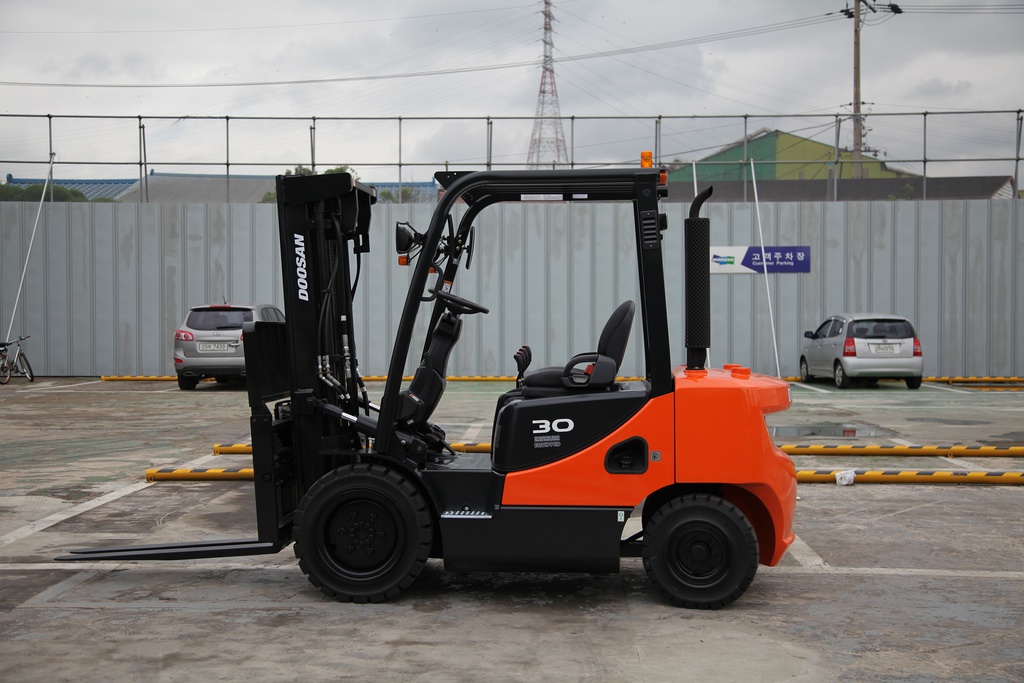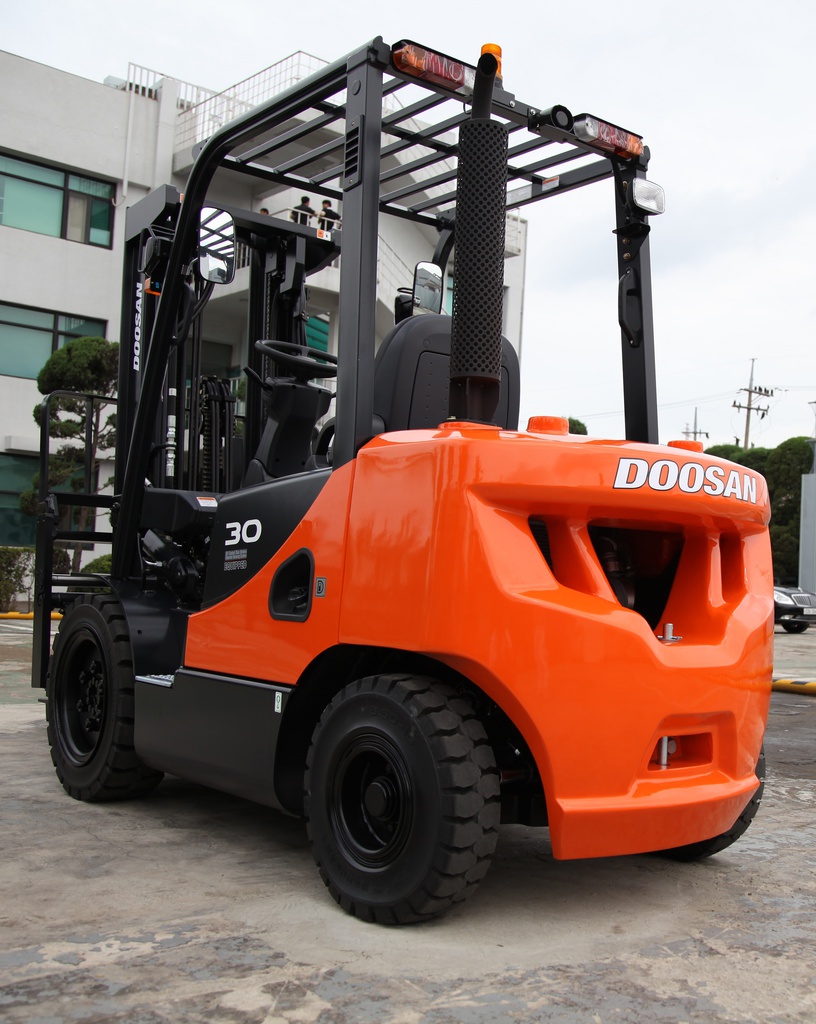| Home> | Lift trucks | >Counterbalance | >Doosan debuts G2 |
| Home> | Lift trucks | >Fleet management | >Doosan debuts G2 |
| Home> | Lift trucks | >Truck power | >Doosan debuts G2 |
Doosan debuts G2
06 October 2014
Doosan Industrial Vehicle UK has launched environmentally-friendly, cost-effective forklifts using the G2 engine, which Doosan designed from scratch to meet the latest emissions regulations.

Doosan Industrial Vehicle has launched five 2.0t to 3.5t capacity forklifts incorporating Doosan’s revolutionary, award-winning G2 diesel engine.
By utilising the Doosan G2 engines, the new D20S-7, D25S-7, D30S-7, D33S-7 and D35C-7 models will meet stringent new EU emissions standards without using a diesel particulate filter (DPF). They also set new standards for proven low fuel consumption at a time of sharply increasing costs for forklift users.
Tim Waples, director of DIV UK, says: "New Euro Stages IIIB and IV regulations require the latest engines to achieve an enormous 90% reduction in emissions of gases and particulates compared to the power units they replace, a real challenge presented to engine manufacturers. To meet this challenge our in-house engine division invested millions of pounds developing an engine that changes the game in diesel combustion, without the operator ending up out of pocket.”
Windsor Materials Handling has already sold 32 G2 equipped forklifts to timber firm Metsa Wood.
Winner of the Innovation category at the FLTA Awards 2014, the G2 has lower fuel consumption, longer maintenance intervals and maintenance-free after-treatment systems that reduce the total cost of ownership over the life of the engine. This means the payback period is faster than for any other engine in this class, says Doosan.
Using Diesel Oxidation Catalyst (DOC) exhaust treatment technology along with an Exhaust Gas Recirculation (EGR) system, the new range of ‘DPF free’ engines is available in 2.4-litre and 3.4-litre versions. In tests at the renowned Millbrook Proving Ground in Bedfordshire (conducted in line with the Urban Phase of the New European Driving Cycle), the smaller engine recorded some of the best fuel consumption figures ever seen in the forklift industry. Fuel consumption was reduced by more than 30% to as little as 2.09 litres per hour in standard mode and 1.67 litres per hour when the optional speed limiter is deployed.
Phil Stones, head of emissions and fuel economy at Millbrook, explains: "Millbrook is very pleased to have assisted Doosan with this important programme. Building on Millbrook’s previous working relationship with Doosan, our extensive tests on the G2 engine in our Variable Temperature Emissions Chamber (VTEC), followed by track tests, resulted in success for the programme and the product.”
"The Doosan G2 engine represents a watershed moment in forklift diesel engine design,” adds Waples. "It is a genuinely innovative approach to the challenge of maintaining performance while meeting exacting emissions standards, and will become the benchmark engine against which all others in the market are measured.”
Governments are increasingly legislating against industry to clean up its act and MHE must play its part, particularly those companies supplying the US and Europe.

These are challenging regulationss and some companies are decreasing the power of their engines to cope. Doosan has invested heavily in R&D to produce a powerful, affordable solution.
Paul Watson, general sales and marketing manager at Doosan says the challenge was to achieve a solution without compromising price over lifetime and performance.
"For 2.5-4 tonne forklifts, the critical element withe new emissions regulations is particulate matter (PM).
"A number of options are available but we feel the Doosan option is best.
"Users could deploy forklifts with power output reduced to below 37kW. This would give them time until 2016 and will be suitable for light use. But if such forklifts are used in heavier applications, such as frequently using ramps, and working with attachments, you risk a shorter truck lifetime.”
Some manufacturers have opted to convert established engines, often adding particulate filters. This leads to some additional cost in terms of parts and downtime as filters need to be replaced.
Doosan has opted to develop an engine specifically to meet the regulations. The Doosan G2 is made at a compact engine plant built in 2012 in South Korea.
Watson explains: "This brings fuel and maintenance advantages, filters need replacing less frequently. We have also managed to reduce vibration and noise, while producing forklifts with high power and low-end torque, and impressive acceleration.
"Furthermore, service intervals are 500 hours and Doosan has added a new counterweight to the forklifts to improve air flow for cooling.
"With this new engine, Doosan is also not reliant on a third party engine provider, and can control the availability and price of spare parts to its network.”
- Tim Waples to CEO of Doosan Industrial Vehicle UK
- Doosan launches advanced 3-wheel electric forklift series
- Reliable and comfortable drive
- Doosan does it for Apex
- Doosan Announces Open Golf Sponsorship
- Saint Gobain confirms Doosan as preferred forklift supplier
- Engines of growth for Doosan
- Affordable reach truck design
- Fork truck direct acquires united
- Doosan launches 25 tonne forklift











/GRABOMATIC LOGO-tn.jpg)
















